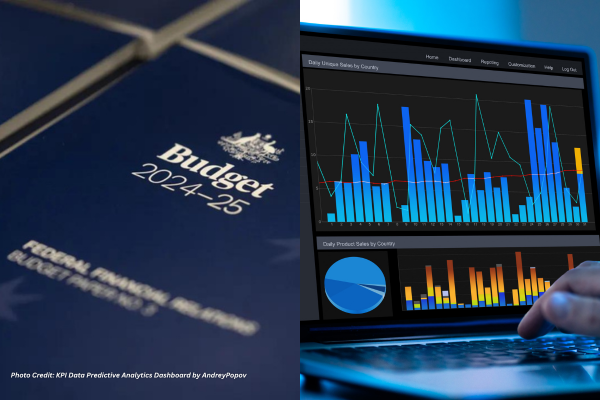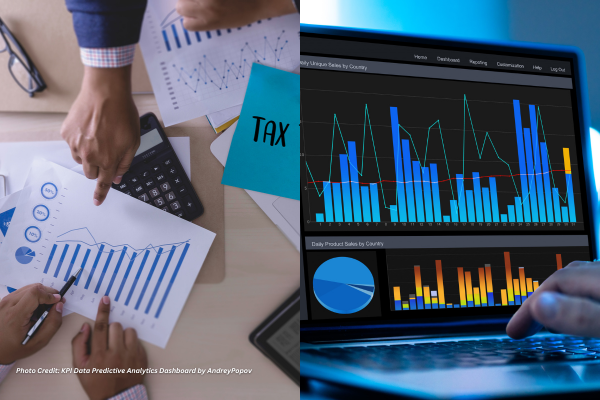Artificial intelligence (AI) is transforming the field of cybersecurity. It is a powerful tool for fighting cybercrime, with features that include real-time threat detection, phishing prevention, security protocol automation, and predictive analysis. Despite these advancements, there are still challenges to overcome in integrating AI with existing infrastructure and ensuring ethical AI deployment. The Australian Government’s interim response to the AI consultation demonstrates the significance of strong governance frameworks to prevent any potential misuse. As AI continues to advance, its contribution to bolstering Australia’s cybersecurity frameworks will be essential to upholding a safe digital environment.
AI boosts cybersecurity solutions
Artificial intelligence (AI) is playing a crucial role in the realm of cybersecurity, offering a versatile strategy to tackle the ever-evolving landscape of cyber threats. The capabilities of AI include detecting threats in real-time, mitigating phishing attacks, automating security protocols, and conducting predictive analysis. The role of AI in cybersecurity is key for identifying, mitigating, and responding to threats.
Addressing the increasing speed, complexity, and frequency of cyber threats has become absolutely crucial. As dark AI continues to advance, cyber threat actors are leveraging its power to carry out attacks that are not only faster but also more sophisticated. These AI-enhanced threats operate quickly and often remain unnoticed, utilising legitimate tools and valid credentials to seamlessly integrate into regular business operations. The integration of AI in cybersecurity marks a significant advancement in safeguarding digital assets.
By harnessing machine learning and intelligent algorithms, it enables the anticipation, detection, and neutralisation of threats with remarkable efficiency. Artificial intelligence plays a critical role in the field of cybersecurity because it efficiently analyses massive volumes of data with remarkable speed. Contrary to conventional security methods that heavily rely on predetermined rules and human involvement, AI systems learn from data patterns to detect irregularities that may indicate possible risks.
Dark AI challenges cybersecurity
The emergence of dark AI marks a notable transformation in the realm of cybersecurity. Dark AI is when cyber attackers use AI to carry out attacks that are faster and more advanced. These AI-enhanced threats operate at a rapid pace, often evading detection by utilising legitimate tools and valid credentials to seamlessly integrate into regular enterprise activities. The stealth and speed of these cyberattacks make traditional security measures less effective. The evolving and adaptive nature of dark AI poses challenges in detecting and countering future threats.
This increasing danger highlights the importance of implementing advanced cybersecurity measures that can effectively counter the complexity of dark AI. In response to the growing threat of dark AI, cybersecurity strategies are now integrating AI to improve detection and response to potential threats. AI’s impressive data processing capabilities allow it to quickly detect any irregularities that may indicate possible risks. The emergence of dark AI has brought about significant changes to the cybersecurity landscape, necessitating the implementation of AI-enhanced security measures. With the ever-changing landscape of cyber threats, the importance of AI in cybersecurity is bound to increase significantly.
AI enhances cyber threat detection
AI-driven detection and analysis have become key in today’s cybersecurity landscape. The demand for more sophisticated methods has become increasingly urgent as cyber threats continue to grow in complexity and frequency. Machine learning (ML) is a fundamental part of AI-powered systems that can detect patterns and learn from previous incidents. Natural language processing effectively interprets human language, leading to enhanced task execution and more inclusive security decision-making among teams.
Extracting valuable patterns and insights from large datasets, data mining is a powerful tool. Meanwhile, predictive analytics uses historical data to forecast potential threats. Behavioural analytics is a powerful tool that closely observes and analyses user behaviour in order to identify any irregularities. Efficient decision-making allows for rapid responses to identified risks.
These components collaborate to efficiently handle vast amounts of data, identify intricate patterns, and swiftly respond to emerging risks. The integration of AI-driven detection and analysis brings a remarkable level of efficiency and continuous learning to enhance human capabilities in the field of cybersecurity. The ever-changing landscape of cyber threats underscores the crucial role of AI in detecting and analysing these threats.
AI applications in cybersecurity
AI applications in cybersecurity greatly improve threat detection, predictive analysis, and automated security protocols, providing advanced solutions to ever-changing cyber threats. These advanced capabilities not only enhance the effectiveness of cybersecurity measures but also result in cost savings and faster response times.
- Threat Detection and Response: AI systems analyse vast amounts of data to detect irregularities and possible risks. They are highly skilled in pattern recognition and anomaly detection, which allows them to effectively identify potential threats. According to KPMG, AI implementation has resulted in a significant 50% decrease in incident response times.
- Predictive Analysis: AI algorithms have the ability to predict potential cyberattacks, allowing for the implementation of preemptive measures. UNSW’s study reveals that predictive AI models can predict up to 80% of cyber threats.
- Automated Security Protocols: AI automates routine security tasks, allowing cybersecurity professionals to concentrate on complex issues. Booz Allen Hamilton noted that this automation has resulted in a 30% reduction in operational costs.
The use of AI in cybersecurity is transforming how businesses safeguard their digital resources and address cyber risks. With the help of artificial intelligence, cybersecurity systems are able to analyse large volumes of data, identify irregularities, anticipate possible attacks, and automatically respond in real-time.
AI in cyberworld practices
The incorporation of AI into cybersecurity frameworks has resulted in notable progress and tangible results across a range of Australian companies, demonstrating the efficacy of AI-powered solutions in addressing cyber threats.
- Australia Cloud: This company has successfully implemented advanced threat intelligence systems powered by artificial intelligence. The incorporation of AI has resulted in a significant reduction in expenses related to data breaches, saving the company AUD 4.03 million. The AI system efficiently processes large volumes of data in real-time, swiftly detects possible threats, and takes immediate action to mitigate the consequences of data breaches.
- Palo Alto : Palo Alto Networks leverages AI technology to improve the effectiveness of real-time threat detection. The implementation of AI has significantly enhanced the company’s overall security by 45%. The AI system constantly monitors network traffic, detecting any irregularities that may suggest a potential cyber attack, and promptly responds to minimise the risk.
These case studies indicate the practical benefits of integrating AI into cybersecurity practices. In addition to saving costs and enhancing threat detection, AI-powered solutions empower organisations to proactively manage risks and respond to incidents more swiftly. Through the automation of repetitive tasks and the enhancement of human abilities, AI enables cybersecurity professionals to devote their attention to strategic initiatives and intricate threat scenarios. In addition, these implementations act as benchmarks for other organisations looking to strengthen their cyber defences in the face of a growing number of advanced cyber threats.
The role of AI in cybersecurity is revolutionary, providing an effective combination of efficiency and ongoing learning that enhances human capabilities. Although human involvement is still key, particularly when dealing with sophisticated attacks, AI is highly effective in handling the vast amount of complex data in cybersecurity. The Federal Budget 2024’s emphasis on local government infrastructure implies a bright outlook for AI in cybersecurity.
By prioritising the allocation of resources towards AI-driven solutions, one can expect a stronger and more secure digital landscape. The ongoing development of AI will have a crucial impact on shaping the future. The implications of this are significant. As AI continues to advance, it has the potential to reshape the cybersecurity landscape, enhancing its strength and adaptability. The incorporation of AI into cybersecurity frameworks will not only improve the ability to detect threats, but also lead to substantial cost reductions related to data breaches.
Justin Lavadia is a content producer and editor at Public Spectrum with a diverse writing background spanning various niches and formats. With a wealth of experience, he brings clarity and concise communication to digital content. His expertise lies in crafting engaging content and delivering impactful narratives that resonate with readers.































































